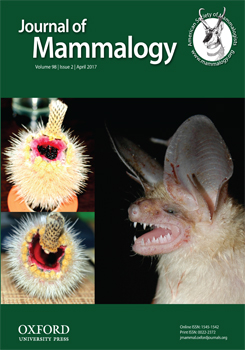Although habitat loss and degradation are major contributors to species declines, some species are able to adapt to changes in land use by selecting different habitats or structures in disturbed areas than they do in more pristine habitats. Bats are particularly vulnerable to changes in land use due to their dependence on specific habitat types and structures. The objective of this study was to determine how selection and use of roost trees, and niche breadth of Rafinesque's big-eared bats (Corynorhinus rafinesquii) varied with land-use history. I examined use and selection of roosts at 3 bottomland hardwood sites that varied in amount and time since timber harvest. Fortynine transects were established as a means of searching for bats in trees with basal cavity openings and were surveyed 2–9 times. Bats at the most-disturbed sites exhibited the broadest niches, using a greater number of tree species and habitat types, although bats at the least-disturbed site used a broader range of cavity volumes. Cavity characteristics were the primary factors governing roost selection by Rafinesque's big-eared bats, but selection varied among sites. Probability of use increased with increasing cavity volume for bats at all sites, but bats at the most-disturbed site primarily used trees in the smallest cavity volume class, whereas bats at the least-disturbed site primarily used trees in the largest cavity volume class. Results of this study suggest that Rafinesque's bigeared bats can adapt to a range of habitat conditions if trees with large cavities are available. However, future studies need to determine the long-term viability of this species in disturbed habitats.
BioOne.org will be down briefly for maintenance on 17 December 2024 between 18:00-22:00 Pacific Time US. We apologize for any inconvenience.
How to translate text using browser tools
30 January 2017
Adaptive response to land-use history and roost selection by Rafinesque's big-eared bats
Susan C. Loeb
ACCESS THE FULL ARTICLE

Journal of Mammalogy
Vol. 98 • No. 2
April 2017
Vol. 98 • No. 2
April 2017




